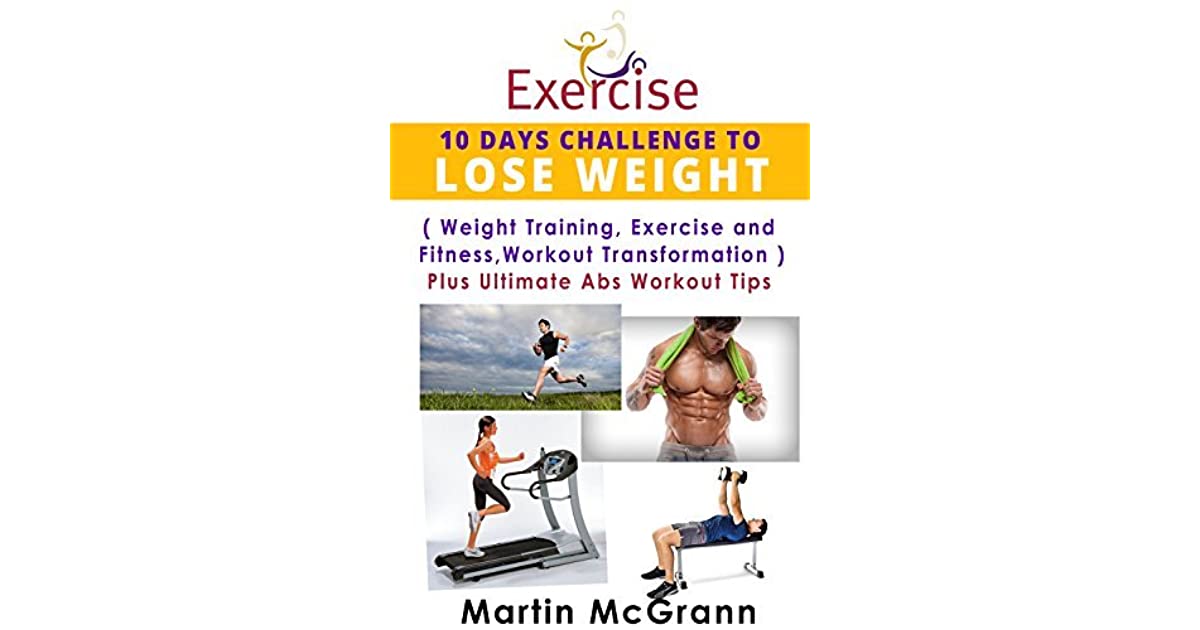
Here are some tips for keeping you motivated if you don't like your current workout routine. Do not force yourself into doing any exercises that aren't your favorite. Keep your routine varied by trying out different exercises. You could walk fast in the mornings and then do a short jog or run afterwards. Remember to warm up and stretch before and after you exercise. Light activities can be done to improve cardiovascular health.
Keep your routine varied by changing it every four weeks. To prevent muscle loss, you should change how many sets and exercises are performed. Research shows that those who vary their workouts are stronger than those who stick to the same routine. Another tip for exercise is to warm-up before and after your workout. The reason for this is that it helps your muscles get used to the stress of physical activity. It reduces soreness.

If you're new to exercising, consider adding a fitness routine to your daily life. This way, you'll have a routine that will be consistent for years to come. It won't be difficult and you'll feel motivated to continue with it. These tips can help you achieve your exercise goals. Make a schedule that fits your lifestyle. You can include fitness activities you love, like walking or cycling.
A solo dance party is a great way to add some energy and positivity to your day. Not only will you be able dance, but you'll also be able increase your endorphins. While performing an intense workout, it's best to put your thoughts to one side. Focusing on your breathing will help you exercise more effectively. So, try a solo dance party. The results will be amazing!
Your heart rate and perceived exertion are important factors when working out. These two indicators will help motivate you. Your heart rate will tell you how hard and often you exercise. A higher heart rate will indicate that you are exercising harder and more often. By measuring your heart rate and perceived exertion, you'll be able to see what pace of exercise you're comfortable with. It's also possible to exercise with someone you know.

Don't overdo it when you start an exercise program. Don't overwork yourself. You could burn out, injure yourself or give up. Beginners should aim to do between 15 and 20 minutes of moderate activity each day and two 10-minute bursts with strength exercises once a week. It's important to pay attention to your core and not just your abs when you work out.
FAQ
What are the 10 best foods to eat?
These are the 10 best foods you can eat:
-
Avocados
-
Berries
-
Broccoli
-
Cauliflower
-
Eggs
-
Fish
-
Grains
-
Nuts
-
Oats
-
Salmon
What is the difference of a virus from a bacteria?
A virus is an organism microscopic that can't reproduce outside its host cells. A bacterium, a single-celled organism, reproduces by splitting into two. Viruses can be as small as 20 nanometers, while bacteria can grow up to 1 micron.
Viruses spread easily through contact with infected bodily tissues, such as saliva and urine, semen, vaginal secretions or pus. Bacteria can be spread by direct contact with infected objects and surfaces.
Viral infections can be transmitted through skin cuts, scrapes and bites. They may also enter through the nose, mouth, eyes, ears, vagina, rectum , or anus.
Bacteria can be introduced to our bodies by cuts, scrapes or burns. They may also be introduced into our bodies through food and water as well as soil, dirt, dust, and animals.
Viruses and bacteria both cause illness. Viruses cannot multiply in their host cells. Viral infections can only cause diseases in living cells.
Bacteria may spread to other people and cause sickness. They can invade other areas of the body. We need antibiotics to get rid of them.
What's the difference of a calorie versus a Kilocalorie?
Calories refer to units that are used for measuring the energy in food. Calories are a unit of measurement. One calorie represents the energy required to raise one gram of water's temperature by one degree Celsius.
Kilocalories can also be used to refer to calories. Kilocalories are expressed in thousandths (or a calorie). 1000 calories are equal to one kilocalorie.
What are the top 10 healthy habits?
-
Eat breakfast every day.
-
Don't skip meals.
-
Be balanced.
-
Drink plenty of water
-
Take care your body.
-
Get enough sleep.
-
Avoid junk food.
-
Daily exercise
-
Have fun!
-
Find new friends
Does being cold give you a weak immune system?
It has been said that there are two types of people on the planet: those who love winter, and those who don't. It doesn't really matter whether you love winter or loathe it. You might be wondering why it makes you miserable.
The truth is that our bodies are built to work best when it's warm. We evolved to thrive in hot environments because of the abundance of food resources.
We live in a very different environment than our ancestors. We spend a lot more time indoors, and are often exposed at extreme temperatures (cold and hot), and we eat processed foods over fresh.
This means that our bodies aren’t used to these extremes. That means that when we do venture outdoors, we're left feeling tired, sluggish, and even sick.
However, there are some ways to reduce these effects. Staying hydrated is one way to combat this. Water is essential for your body to function properly and eliminate toxins.
Another important step is to ensure that you're eating healthy meals. Eating nutritious foods helps your body maintain its optimal temperature. This is especially important for those who spend long periods inside.
Finally, consider taking a few minutes each morning to meditate. Meditation helps to calm your mind and body which can make it easier to deal stress and illness.
What's the difference between fat or sugar?
Fat can be a source of energy that is obtained from food. Sugar is a sweet substance that can be found naturally in fruits or vegetables. Both sugars and fats have the same calories. Fats however, have more calories than sugars.
The body stores fats and they can lead to obesity. They cause cholesterol buildup in arteries which may lead to heart attacks and strokes.
Sugars are quickly absorbed into the body and provide instant fuel. This causes blood glucose levels rise. High blood glucose levels are dangerous as it can increase the likelihood of developing type 2 diabetes.
How can I live the best life possible every day?
Find out what makes YOU happy. This is the first step in living a life that you love. Once you are clear about what makes you happy and satisfied, you can move on to the next step. You can also ask others how they live their best lives everyday.
You can also find books such as "How to Live Your Best Life" written by Dr. Wayne Dyer. He talks about finding happiness and fulfillment in all aspects of our lives.
Statistics
- This article received 11 testimonials and 86% of readers who voted found it helpful, earning it our reader-approved status. (wikihow.com)
- According to the Physical Activity Guidelines for Americans, we should strive for at least 150 minutes of moderate intensity activity each week (54Trusted Source Smoking, harmful use of drugs, and alcohol abuse can all seriously negatively affect your health. (healthline.com)
- In both adults and children, the intake of free sugars should be reduced to less than 10% of total energy intake. (who.int)
- According to the 2020 Dietary Guidelines for Americans, a balanced diet high in fruits and vegetables, lean protein, low-fat dairy and whole grains is needed for optimal energy. (mayoclinichealthsystem.org)
External Links
How To
What does the term "vitamins" mean?
Vitamins are organic compounds found naturally in food. Vitamins allow us to absorb nutrients from food. Vitamins cannot come from the body so food must provide them.
There are two types: water-soluble and fat-soluble vitamins. Water-soluble vitamins dissolve quickly in water. You can find vitamin C,B1 or thiamine, B2 or riboflavin and B3 or niacin, B3/niacin, B6/pyridoxine, folic Acid, biotin and pantothenic Acid as examples. Fat-soluble vitamins are stored in the liver, fatty tissue and kidneys. You can find vitamin D, E K, A, beta carotene, and other fat-soluble vitamins.
Vitamins can be classified by their biological activity. There are eight major groups of vitamins:
-
A - vital for healthy growth.
-
C - essential for nerve function and energy generation.
-
D - Vital for healthy bones and teeth
-
E is necessary for good vision, reproduction.
-
K - required for healthy muscles and nerves.
-
P - vital for building strong bones andteeth.
-
Q - aids digestion, absorption and absorption iron
-
R is required for the production of red blood cells.
The recommended daily allowance (RDA), for vitamins, varies depending upon age, gender, or physical condition. The U.S. Food and Drug Administration sets RDA values.
For example, the RDA for vitamin A is 400 micrograms per dayfor adults 19 years or older. Pregnant mothers need 600 micrograms per days because it is vital for the development and growth of their baby. Children ages 1-8 require 900 micrograms per day. Infants below one year old require 700mg per day. But, between 9 months to 12 months, the amount drops to 500mg per day.
Children aged between 1-18 years require 800 micrograms of sugar per day, while overweight children need 1000 micrograms. Children who are underweight receive 1200 micrograms every day to meet their nutritional requirements.
Children aged 4-8 years old who have been diagnosed as having anemia require 2200 micrograms of vitamin C per day.
2000 micrograms is the minimum daily intake for adults over 50 years old to maintain good health. Women who are pregnant or breastfeeding need 3000 micrograms per day due to increased nutrient requirements.
1500 micrograms is the recommended daily intake for adults aged 70+, who lose approximately 10% of muscle each year.
Women who are pregnant, nursing or breastfeeding need more than the RDA. Pregnant and breastfeeding women require 4000 micrograms each day during pregnancy and 2500 Micrograms each day after delivery. Breastfeeding mothers require 5000 micrograms daily when breast milk production is occurring.